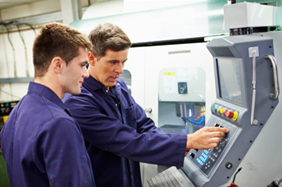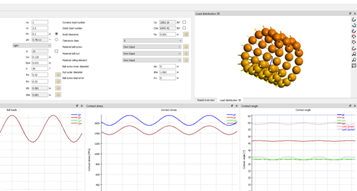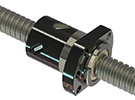Precision machining continues to remain a highly essential technology for creating components of the many items we depend on each and every day. Here we take a closer look at precision machining and how Nook ball screw assemblies are ideal for supporting advances in this modern manufacturing technology.
What is Precision Machining?
Precision machining is a type of technical manufacturing that is essential in creating and designing machines, parts, tools, and other hardware using process controls and tolerances, that function under extremely tight specifications.
Precision machining creates parts according to tight tolerances so they fit precisely into the object or machine they are made for. If an object consists of many small parts, it will often require precision machining to ensure proper fit and function. Because precision machining requires extreme accuracy, the materials and machining equipment must be very specific.
Precision machining has evolved over time, and technology advancements continue to push the limits of performance. Precision machining typically combines computer-controlled design and human engineered design to create unique features. Precision machining is important to create parts with precision, stability, and repeatability with consistency, accuracy, and durability.
How it is used
Precision machining can be used to create a wide variety of parts from any number of different materials. These parts usually require tight tolerances and minimal part-to-part variation from nominal dimensions. This translates into very tight margins for error in production. Repeatability and well-controlled tolerances are hallmarks of precision machining.
How it works
Precision machining is a subtractive process where custom software, engineered tools, and process steps are utilized on raw material such as plastic, ceramic, metal, or composites to create desired fine-featured products. Precision machining is often controlled by computer aided design (CAD) and computer aided manufacturing (CAM) programs. These programs enhance the ability to meet tight tolerances. However, while most designs end up as computer aided designs, they often start out as hand drawn sketches.


Tools and Materials
Precision machining can utilize a variety of raw materials including (but not limited to) plastic, ceramic, metal, composites, steel, bronze, graphite, and glass. In order to make precise cuts and intricate material removal, a combination of tools may be used. CNC heavy machinery is commonly used to remove substrate material to create finely detailed components. In some cases, high-speed robotics may also be used.
- Swiss Machines: Provide accurate and precise function according to specific CNC encoded instructions (computer numerical control). Originally used to create parts for Swiss watches, they are very effective at machining small parts without displacement or vibration. They hold the workpiece in place, while the tool rotates around it.
- Lathes: Rotates the workpiece against a cutting tool. They can also be controlled by a computer to produce intricate designs. They are ideal for products that are symmetric around an axis of rotation. Different types include - turret lathes, engine lathes, and special purpose lathes.
- Mills: Uses rotating cutters to remove material. Often feature moveable tables on which the workpieces are mounted. The cutting tools are stationary, and the table moves the material to make the desired cuts. Operations include planing, cutting, rabbeting, routing, and die-sinking.
- ECM/EDM: Electrical Discharge Machine are used to cut metals that are electrically conductive. Uses an electrically charged wire or electrode to cut or punch metal.
- Laser Engraving: A laser on a rotary attachment provides functionality for etching or engraving. Laser engraving is essential for logos, serialization, and QR codes imprinting.
- Grinding: Use an abrasive wheel to create fine finishes/faint cuts. The wheel or product is moved from side to side to create the desired finish. Types include belt, bench, cylindrical, surface and jig.
- Sawing: Sawing of metals is generally performed using cut-off machines. Other machines include power hack saws, abrasive wheel saws, and circular saws.
- Broaching: Used to produce square holes, keyways, spline holes, etc. It consists of many teeth arranged sequentially a with each tooth slightly larger than each previous tooth.
- Drilling/Boring/Reaming: Drilling produces cylindrical holes in solid materials using drill bits.
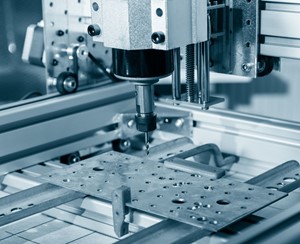
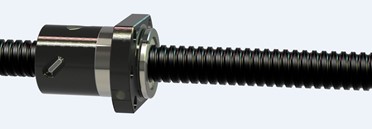
Learn More about Precision Machining
Use precision components in your precision equipment.
Our operations are all located at a single U.S. facility in Cleveland, Ohio. This gives us tremendous flexibility to manage our supply chain while increasing the efficiency and performance of your machines. We accomplish this with a rigorously controlled process integrity that includes Lean Manufacturing, 5S, and Six Sigma. Our Quality systems emphasize continuous improvement, defect prevention, statistical methods and ongoing training to increase the knowledge and skills of all employees.
Nook Industries can not only manufacture build to print solutions for a customer's design, we also have the extended ability to Develop, Evaluate, Optimize, and Validate a custom design. Nook provides a wide variety of testing and simulation services to help our customers design better products. We can simulate many real-world scenarios to determine how a given design will perform. This helps to speed design process, improve reliability, determine life cycle, and predict performance in advance.
